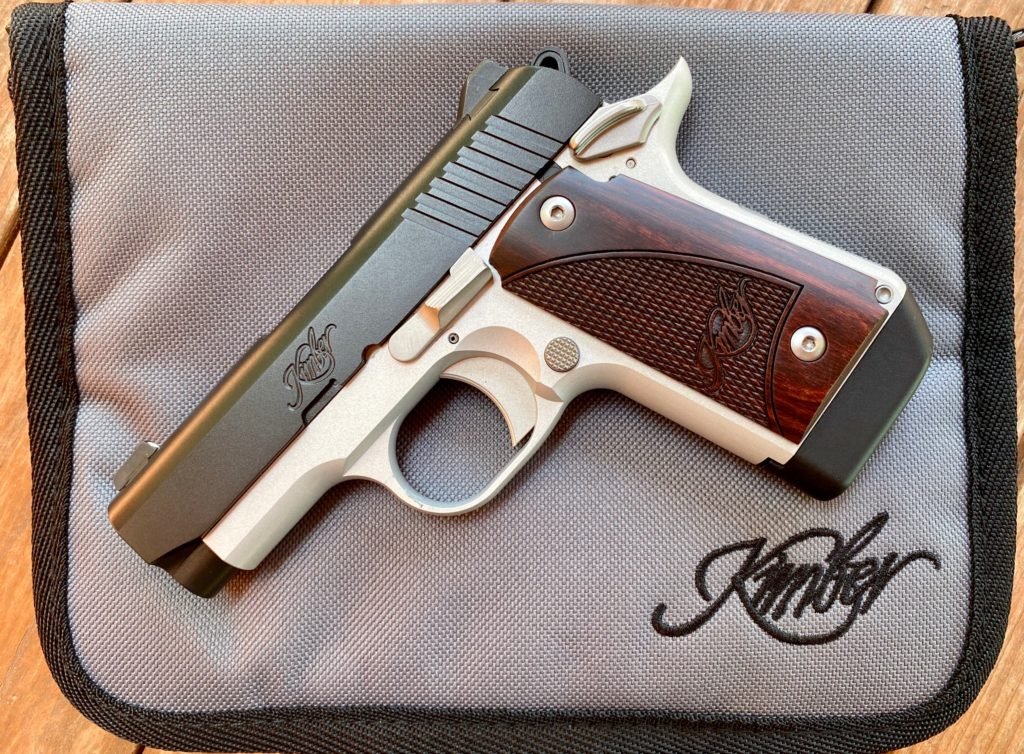
Different Types Of Handguns You Are Allowed To Carry
Introduction
When it comes to the sale and carry of firearms, there are a lot of rules and regulations that you need to follow. Not only are there federal laws that every American has to consider but there are also state laws that vary wildly in how much you can exercise your Second Amendment right to bear arms. There may even be county and city considerations, too.
So, with all that in mind, here’s a short guide on the different types of handguns you are allowed to carry. The two main forms of carrying are concealed carry and open carry, so we’ve included information related to both.
If you’re looking for thoughts on a specific gun model, you’ll find reviews and more at the site that wrote this Kimber Micro 9 review.
Federal Age Restrictions
First, let’s get the age restrictions out of the way.
In federal law, there is no minimum age for the possession of long guns and long gun ammunition, but this isn’t the case with handguns. Being in possession of a handgun and any handgun ammunition when you’re under the age of 18 is federally illegal.
The main form of restriction for firearms is through the buy and sale of them. Long guns can be bought from licensed dealers as long as you’re over the age of 18. Again, this is not the case with handguns. If you want to buy a handgun from a licensed gun dealer, you need to be 21 or over.
This may sound counterintuitive to many but handguns tend to be more strictly regulated because they’re easily concealed. While a long gun can pose a threat, handguns make up the vast majority of all firearm-related crimes. This has been the case since the 1960s when the 21 age restriction was first passed.
Handguns are also easier to conceal, so there’s much more responsibility that’s required when buying and carrying one. You draw attention to yourself when carrying a long gun while those carrying a handgun aren’t so noticeable.
Constitutional Carry States
Once you have a handgun, you should become familiar with constitutional carry. The laws regarding carrying handguns don’t change that much when the model you own changes. Instead, to understand whether you can carry your handgun or not, you need to understand the Second Amendment state laws relating to handgun carry.
Constitutional carry, also known as permit-less carry, unrestricted carry, or Vermont carry, is the legal carry of a handgun. It doesn’t matter if it’s open or concealed, states with constitutional carry afford citizens their Second Amendment right to bear arms.
The phrase constitutional carry typically only refers to handguns, so there are the states where you should be able to carry your handgun with minimal worry or red tape. Fortunately for you, the right to carry has recently been contested and decided on, with constitutional carry becoming effective in many US states as of the 1st of July 2021, and then September 1st, 2021, for some others. Here are those states below:

- Alaska
- Arizona
- Arkansas
- Idaho
- Iowa
- Kansas
- Kentucky
- Maine
- Mississippi
- Missouri
- Montana
- New Hampshire
- North Dakota (only concealed carry if you are a resident)
- Oklahoma
- South Dakota
- Tennessee (residents only, with only handguns)
- Texas (effective September 1st, 2021)
- Utah
- Vermont
- West Virginia
- Wyoming
Shall-Issue States
Shall-issue states are where you need a license to conceal carry a handgun. If you fit the criteria of the license, you’ll pass and be able to carry. The granting authorities have no discretion, so they don’t impose any other hoops for you to jump through when getting registered. Here are the shall-issue states:
- Alabama
- Alaska
- Arizona
- Colorado
- District of Columbia
- Florida
- Georgia
- Idaho
- Illinois
- Indiana
- Iowa
- Kansas
- Kentucky
- Louisiana
- Maine
- Michigan
- Minnesota
- Mississippi
- Missouri
- Montana
- Nebraska
- Nevada
- New Hampshire
- New Mexico
- North Carolina
- North Dakota
- Ohio
- Oklahoma
- Oregon
- Pennsylvania
- Rhode Island (for permits by local authorities)
- South Carolina
- South Dakota
- Tennessee
- Texas
- Utah
- Virginia
- Washington
- West Virginia
- Wisconsin
- Wyoming
May-Issue States
The next tier of carrying concerns may-issue regulations. These are states or jurisdictions where the permit is required to carry a concealed handgun. The permits are given at the discretion of the granting authority, which is typically the local police or sheriff. You don’t just need to meet the shall-issue criteria, you also need to convince those authorities that you should have the permit. Self-defense often does not constitute the “good cause” requirement for why you need to have a concealed carry handgun.
They can deny you without giving any substantive reason. Some places will suggest a pathway where you can appeal or otherwise legally challenge the rejection while others won’t. They can also revoke permits after they have been awarded if the reason for the permit acquisition is no longer relevant. The idea of “good cause” is the main thing that separates shall-issue and may-issue jurisdictions, which may have very similar verbiage in their legal literature.
The following states are may-issue:
- California
- Connecticut
- Delaware
- Hawaii
- Maryland
- Massachusetts
- New Jersey
- New York
- Rhode Island

May-issue is a broad category of states that differ widely. For example, some of them are so-called permissive may-issue states which award concealed carry permits at a much higher rate than the restrictive may-issue states.
Connecticut is a great example of a permissive state that’s effectively a shall-issue state when it comes to its enforcement of may-issue legislation. Hawaii is much more restrictive, denying most applications that cross their desk. The states with larger populations – California, New York, and Massachusetts, have narrowed the “good cause” requirements to reflect the larger crime rates in those areas. Rural areas in those states may accept self-defense as a reason but inside San Francisco, New York City, and Boston, it is nearly impossible to acquire a firearm.
Localized jurisdictions within may-issue states that heavily restrict firearm ownership and carry have become known as no-issue jurisdictions. Many of these areas have exceptions that say certain retired occupations can continue to carry firearms.
Open Carry States
You can open carry in states with constitutional carry laws but some states have different rules for open carry. These come in four main types:
1. Open Carry With Local Restriction
This is where the state allows unrestricted open carry but you’ll have additional restrictions for certain locations. Some states allow license holders to still carry in these areas while some do not.
- Colorado
- Missouri
- Nebraska
- Oregon
- Pennsylvania
2. Licensed Open Carry
These states have restricted open carry freedoms behind licenses and permits that must be acquired. Once acquired, open carry is lawful on foot and in a vehicle. Some of these states are stringent enough that they’re considered restrictive may-issue states, like New Jersey for example.
- Connecticut
- Georgia
- Hawaii
- Indiana
- Maryland
- Massachusetts
- Minnesota
- New Jersey
- North Dakota
- Oklahoma
- Rhode Island
- South Carolina
- Tennessee
- Texas
- Utah
3. Nonpermissive Open Carry
This means open carry is not lawful or is justifiable in a very narrow set of circumstances. You may be able to transport or hunt with handguns but otherwise, it’s virtually illegal.
- District of Columbia
- Florida
- Hawaii (practiced)
- Illinois
- Maryland (practiced)
- New Jersey (practiced)
- New York
4. Anomalous Open Carry
This is where special circumstances are required before open carrying is permitted. This is mainly in local jurisdictions or counties that have unincorporated land. California is the only state where this phenomenon is found. While the urban centers have very restrictive may-issue (practically no-issue) approaches to both open and concealed handgun carry, there are rural areas where anomalous open carry is possible.




